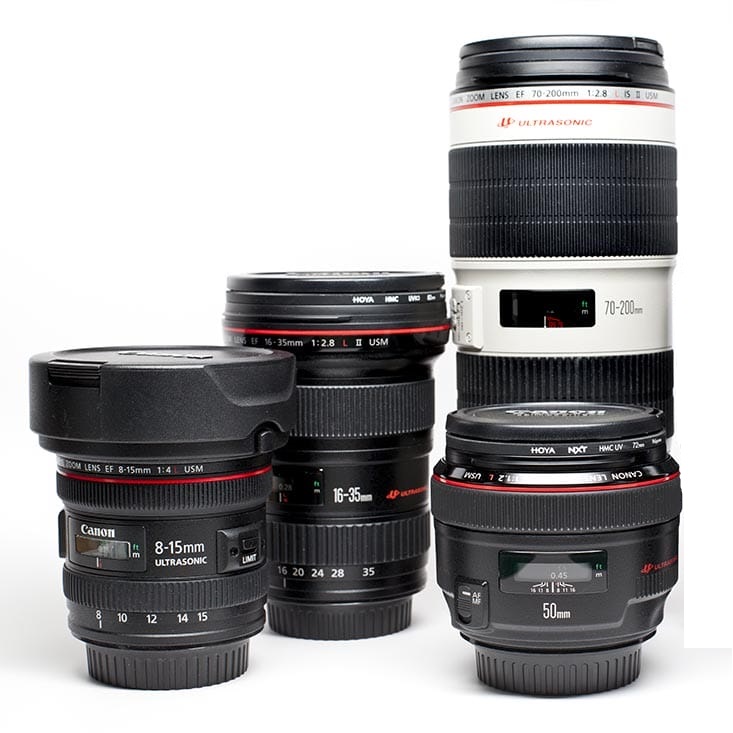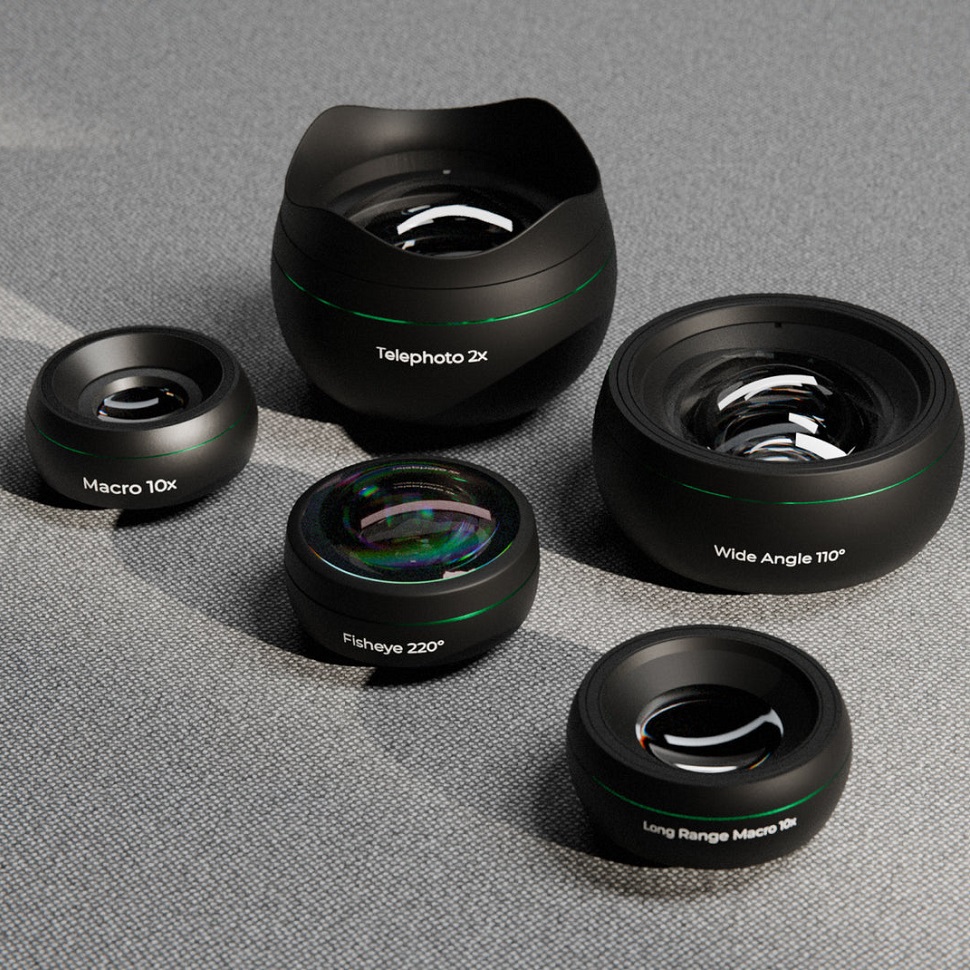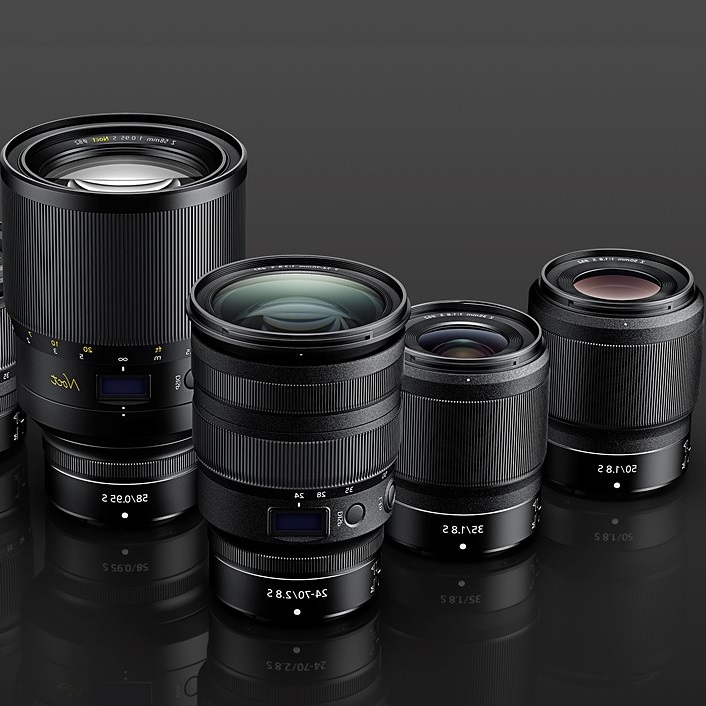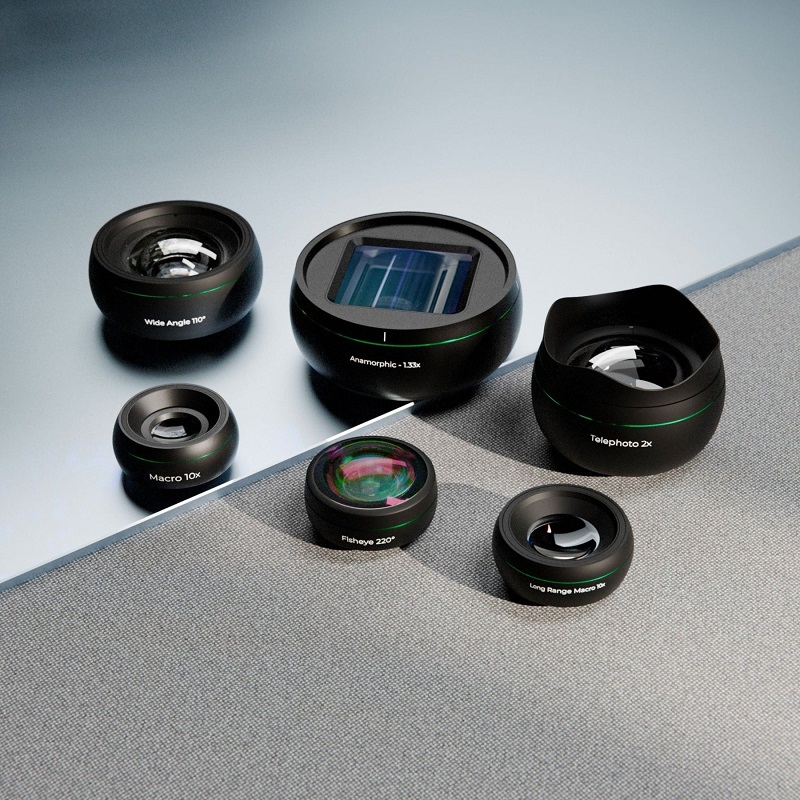Camera lenses play a crucial role in photography. They determine how light reaches the camera sensor and how images are captured. Selecting the right lens can greatly influence the final outcome of a photograph. This article aims to provide valuable insights into camera lenses, helping photographers understand their options and make informed decisions. We will cover various types of lenses, their characteristics, and how to choose the right lens for different photographic situations.
The Basics of Camera Lenses
What Is a Camera Lens?
A camera lens is an optical device that focuses light onto the camera sensor. Lenses consist of several glass elements arranged in a specific order. These elements work together to magnify, focus, and improve the clarity of images. The quality and design of a lens have a significant impact on the resulting photographs.
Lenses come in various shapes and sizes. Each type of lens has different specifications and purposes. Some lenses are designed for specific photography styles, while others offer versatility for multiple situations. Understanding the basic components of a lens can help photographers appreciate the technology behind the images they capture.
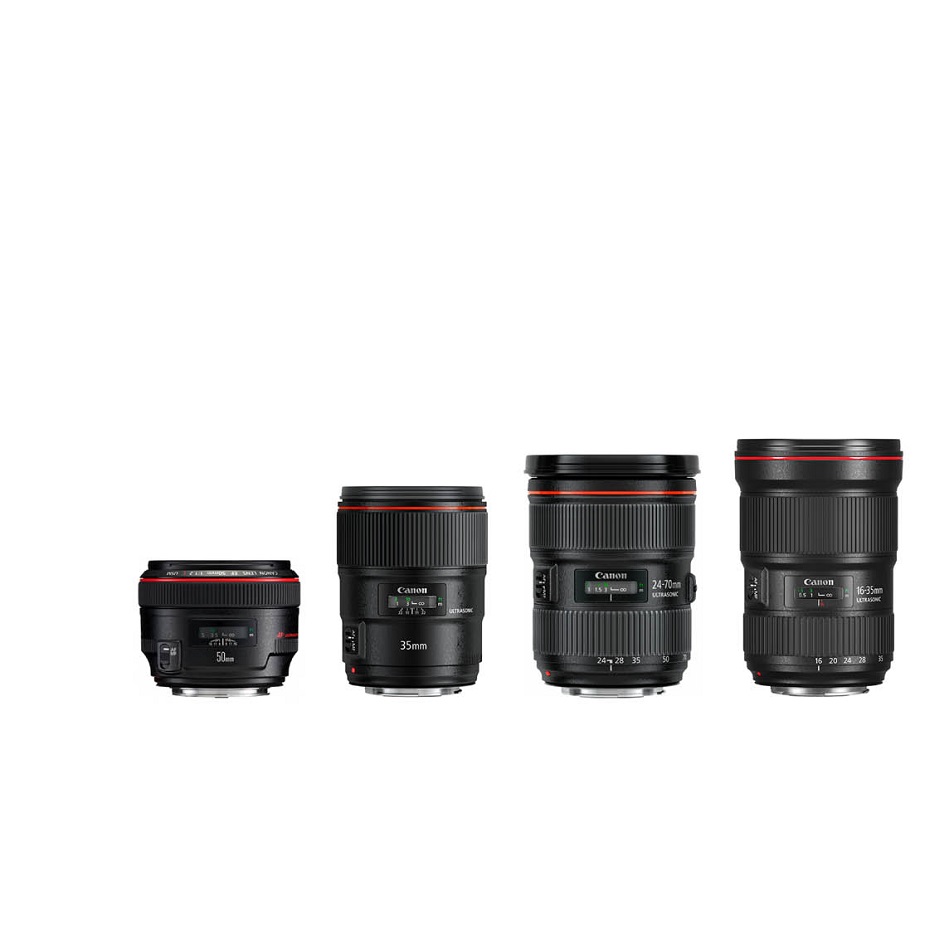
Key Lens Specifications
When choosing a lens, photographers should pay attention to key specifications. These include focal length, aperture, and lens type. Focal length is measured in millimeters (mm) and indicates how zoomed in or out an image will be. A short focal length, such as 18mm, is ideal for wide-angle shots, while a longer focal length, like 200mm, is suitable for telephoto photography.
Aperture, measured in f-stops, determines how much light a lens allows in. A lower f-stop number, such as f/1.8, means a larger aperture and greater light intake, resulting in better performance in low light conditions. On the other hand, a higher f-stop number offers a smaller aperture, leading to more depth of field and sharper results across a wider range of the image.
Lens Mounts
Another essential aspect of camera lenses is the lens mount. Different camera manufacturers use different mounts. This means that not every lens will fit every camera. Understanding the compatibility of lenses with your camera body is vital. Many photographers choose to buy lenses from the same brand as their camera for guaranteed compatibility. However, there are also third-party lens manufacturers that offer compatible options.
Types of Camera Lenses
Prime Lenses
Prime lenses are fixed focal length lenses. They do not zoom in or out, offering only one specific focal length. Despite their limitations, prime lenses have several advantages. They are typically lighter and more portable than zoom lenses. Additionally, many prime lenses have larger apertures, allowing for better low-light performance and a shallower depth of field.
Photographers often choose prime lenses for portrait or landscape photography. They encourage users to think more creatively about composition. Since photographers cannot zoom in or out, they must physically move closer or farther away from the subject. This encourages a deeper understanding of framing and composition.
Zoom Lenses
Zoom lenses provide versatility with adjustable focal lengths. A zoom lens can cover a wide range, enabling photographers to switch between wide-angle and telephoto without changing lenses. This makes them an excellent choice for events, travel, or any scenario where quick adjustments are necessary.
Zoom lenses tend to be heavier and bulkier than prime lenses. However, many photographers prioritize their convenience. For example, a lens covering focal lengths from 24mm to 70mm can handle most situations without requiring multiple lenses. This flexibility is particularly beneficial when photographers do not have time to change lenses often.
Wide-Angle Lenses
Wide-angle lenses have shorter focal lengths, usually ranging from 10mm to 35mm. They allow photographers to capture wide fields of view, making them ideal for landscapes, architecture, and various group shots. The unique perspective of wide-angle lenses can add depth to images and emphasize foreground elements while providing context to backgrounds.
However, using wide-angle lenses requires awareness of distortion. Straight lines can appear curved, especially at the edges of the frame. As a result, photographers must be mindful of their composition to avoid unintended effects. Many photographers enjoy experimenting with wide angles to create unique and artistic shots.
Telephoto Lenses
Telephoto lenses have longer focal lengths, typically starting around 70mm and going up to 600mm or more. They allow photographers to capture distant subjects with remarkable detail. These lenses are popular in wildlife photography, sports, and any scenario requiring long-distance shots.
Telephoto lenses also compress the background, creating a pleasing bokeh effect. This draws attention to the subject by blurring the background while keeping the subject in sharp focus. However, telephoto lenses can be challenging to handle because even slight movements can lead to blurry images. Using a tripod or stabilizer can significantly enhance the quality of telephoto shots.
Special Types of Lenses
Macro Lenses
Macro lenses are specialized for extreme close-up photography. They typically have a focal length ranging from 50mm to 200mm. These lenses enable photographers to capture incredible detail in small subjects, such as insects, flowers, and texture.
The key feature of macro lenses is their ability to achieve a 1:1 magnification ratio. This means that the subject is reproduced on the camera sensor at its actual size. Because of this capability, macro photography often requires precise focusing and proper lighting to avoid glare and shadows.
Photographers must also consider depth of field when using macro lenses. With such close distances, even minor adjustments in aperture can lead to significant changes in focus. This necessitates careful planning and adjustment to achieve the desired results.
Fisheye Lenses
Fisheye lenses are extreme wide-angle lenses. They can create a distinctive distortion effect that curves lines toward the edges of the frame. These lenses are ideal for artistic and creative photography, offering a unique perspective that can be both playful and dramatic.
Fisheye lenses typically have a focal length of 8mm to 16mm. They have a very wide field of view, often exceeding 180 degrees. This unique capability allows photographers to capture unique, immersive scenes that traditional lenses may miss. However, the distortion can be too extreme for some applications, so it is essential to use them with intention.
Tilt-Shift Lenses
Tilt-shift lenses are specialized tools for controlling perspective and depth of field. They allow photographers to tilt the lens plane relative to the image sensor, which can be useful in architectural photography. This feature prevents converging lines and maintains straight verticals, which is a common issue in standard lenses.
Shift functionality can also be beneficial for panoramic photographs. By shifting the lens, photographers can capture a wider field of view without changing their position, which also mitigates distortion. Tilt-shift lenses, however, require a higher level of understanding of optics and composition. They are often favored by professionals for their precision and control.
Choosing the Right Lens
Assessing Your Needs
When selecting a lens, consider your photography style. Are you capturing landscapes, portraits, or sports? Each scenario calls for different lens characteristics. Analyze your requirements and prioritize what aspects matter most.
If you often shoot in low light, look for lenses with larger apertures. If you prefer wide-angle shots, select a lens that covers short focal lengths. Regularly capturing distant subjects? Consider investing in a telephoto lens.
Budget also plays a significant role. High-quality lenses can be expensive, but many mid-range options perform admirably. Research reviews and comparisons to find the best value for your photography.
Understanding Lens Compatibility
Before purchasing a lens, double-check its compatibility with your camera body. Ensure the lens mount matches your camera brand and model. Many manufacturers have tutorials or compatibility charts online to assist potential buyers.
Also, think about potential future upgrades. If you plan to switch camera systems in the near future, consider lenses that are adaptable or popular across multiple platforms. Instant access to new lenses can be helpful as you transition to new equipment.
Sample Photography Scenarios
Different photography scenarios require specific lenses to optimize outcomes. For portrait photography, prime lenses with large apertures work exceptionally well for achieving beautiful background blur and a pleasant subject focus. Additionally, the fixed focal length promotes better composition and encourages thoughtfulness.
For event photography, versatility is key. A zoom lens can adapt quickly to changing situations, making it easier to capture candid moments without missing essential details. In contrast, landscape photography often benefits from wide-angle lenses, allowing expansive scenes to unfold and inspiring creative compositions.
When considering wildlife photography or sports events, telephoto lenses allow for capturing distant movements while maintaining the subject’s clarity. The ability to zoom in from safer distances protects both the subject and the photographer.
Buying Tips for Camera Lenses
When purchasing camera lenses, explore reputable retailers, both online and in-store. Read product reviews and consider asking experienced photographers for their recommendations.
Additionally, consider buying used or refurbished lenses from trusted sources. Many pre-owned lenses are in excellent condition and offer a significant price reduction. However, always check for return policies and warranty options to secure a satisfactory investment.
Care and Maintenance of Camera Lenses
Regular Cleaning
Maintaining your camera lenses is crucial for ensuring longevity and performance. Regular cleaning helps keep the glass elements free of dust, smudges, and fingerprints. Start by using a blower to remove loose debris, and then gently wipe the surface with a microfiber cloth.
Be careful not to touch the glass with your fingers, as natural oils can create stubborn smudges. In some cases, a lens cleaning solution may aid in removing difficult spots. Best practices involve cleaning your lenses before and after each shoot to maintain optimal image quality.
Proper Storage
Proper lens storage can significantly extend their lifespan. Store lenses in a dry and cool environment, preferably in a dedicated camera bag or lens case. Consider using silica gel packets to absorb excess moisture and prevent mold growth inside the lens.
It is essential to avoid leaving lenses in direct sunlight or high-temperature environments. Extreme heat can damage lens coatings and affect performance. Proper handling is equally important—avoid dropping or bumping lenses during use.
Protective Filters
Using protective filters creates an additional layer of defense for your lens. These filters help prevent scratches and damage from environmental elements. While some argue that filters can degrade image quality, many photographers opt for UV or clear filters for peace of mind.
If you use a filter, ensure it is of high quality to avoid affecting image performance. Consider adding polarizing filters for specific photographic situations, such as landscapes, where reflections may interfere with image quality.
Understanding Lens Repairs
Even with the best care, accidents can happen. If your lens experiences issues, seek professional repair services. Attempting to fix the lens yourself could lead to further damage. Many camera shops offer repair services or can direct you to certified professionals trained in camera maintenance.
Keeping your lens in excellent condition will safeguard its longevity, ensuring that it remains a reliable tool for capturing stunning photographs for years to come.
Conclusion: Mastering Camera Lenses
Navigating the world of camera lenses can initially seem overwhelming. However, understanding lens types, features, and specifications can help photographers make informed decisions about their gear. Whether you prefer prime or zoom lenses, wide-angle or telephoto, each option has unique advantages catering to various photographic styles.
As photographers grow and evolve, their preferences and techniques will often change. Experimenting with different lenses can lead to valuable discoveries and enhancements in your photography. Investing time in understanding lenses and their applications will ultimately lead to better photographs and a deeper appreciation for the art of photography. Whether you’re a beginner or a seasoned professional, mastering camera lenses is a vital step toward capturing breathtaking images that tell stories.
